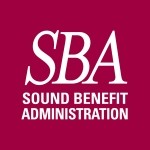By law, COBRA participants – and Qualified Beneficiaries – have the same open enrollment rights as active employees. Therefore, the same open enrollment materials furnished to active employees must be furnished to COBRA participants. In fact, COBRA participants can switch benefit plans, add plans they had not previously enrolled in as well as add or drop dependents. If the company adds a new COBRA eligible benefit, that new benefit must now be offered to COBRA participants, i.e. if the company adds a new health plan option that option must be made available to COBRA participants.
So, to this end, it’s important they are sent all the Summary of Benefits Coverages (SBC). If a company has more than one medical or dental plan, COBRA participants need the opportunity to compare plans to determine which one best suits their needs.
As soon as we are notified of plan and/or rate changes, SBA sends an open enrollment letter with SBCs for each plan and COBRA payment coupons based on no changes (we find 75% of all COBRA participants make no changes) to all COBRA participants. Unlike some COBRA notifications, there is no requirement for proof of postage for open enrollment packets. We track the date that the packets were mailed and use that as our documentation that a packet was, indeed, mailed.
Trends change but currently we find most employers/brokers include the COBRA participant(s) on the census to be enrolled with “same as” benefit coverage even if moving to a new insurance carrier. If the COBRA participant wants to change plans, enrollment forms need to be submitted to the insurance carrier notifying them of the benefit/enrollment change. It’s been our experience this change can be made well past the deadline active employees have to make changes. I like to think of the active employees as a “captive audience” and COBRA participants as a “rogue audience” who may be on vacation or somewhat unavailable. Maybe that’s why the carrier allows late enrollment changes for COBRA participants.
Occasionally, employers make last minute renewal changes. We might be told of renewal decisions after the date benefits renew. COBRA participants are supposed to be given 30 days to remit payment for new benefits. If the plan renews January 1st, for example, and we mail an open enrollment packet to a COBRA participant on January 5th, the COBRA participant has until February 4th (30 days) to remit the new premium to be considered “on time.”
What happens if a COBRA participant doesn’t respond?
The answer to this question depends on the what changes are occurring with the coverage. Here are some examples:
- The company’s plans are not changing. SBA sends new COBRA payment coupons with updated rates along with the open enrollment materials for the new plan and if the participant continues payment, they are passively enrolled with “same as” coverage for the new plan year.
- The company’s plans have changed. If a company has changed plans and a participant doesn’t not make a new election within the 30-day grace period or submit payment postmarked by the date of the end of the 30-day grace period, the participant has effectively terminated coverage and a termination notice is required. This notice does require proof of postage. SBA typically sends termination notices on the 5th of the month following the failure to pay – allowing for payments postmarked at the end of the period to arrive.
It happens from time to time that a participant may be travelling or did not receive the open enrollment packet. In most cases, as the deadline approaches, we will attempt to contact the participant via email or phone. This isn’t required, it’s simply a courtesy. More likely, this participant didn’t respond because they have secured new coverage elsewhere, either through the individual market or a new employer.
With COBRA, it’s always a good idea to first assume that anything your active employees get – so does the COBRA participant. And, before you close the books on this renewal year, keep in mind COBRA participants may still have time to make changes.
